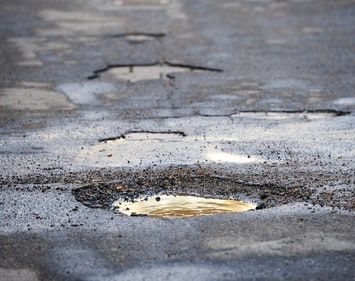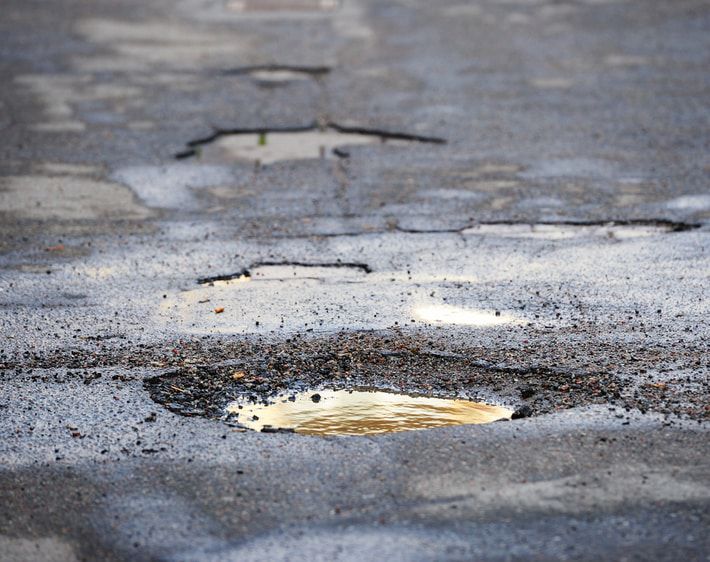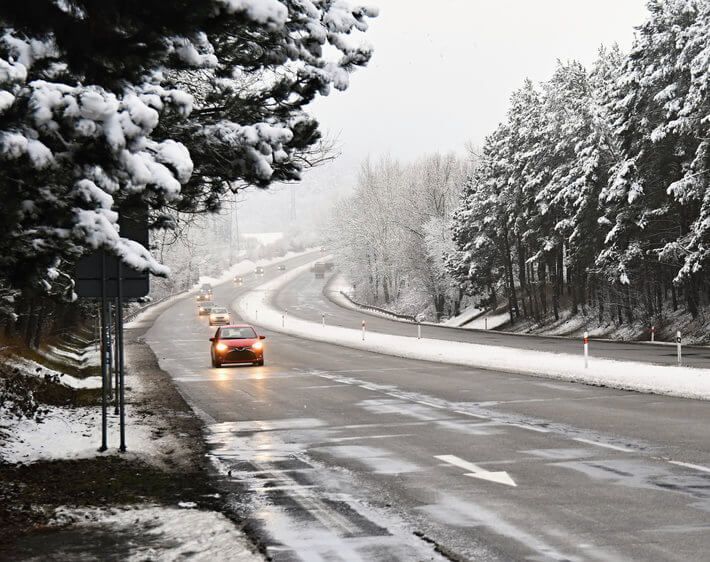
What is a pothole?
If it looks like someone took a jackhammer to a perfectly good road, you might be looking at a pothole problem. Potholes look like craters in the middle of otherwise solid asphalt or concrete. They are depressions or disruptions on the surface of a road, and they vary in size depending on the severity of the damage. If you’re lucky, you’ll spot a pothole before you hit it—just in time to steer safely out of the way.
What causes potholes to form?
No, potholes aren’t caused by ghost-powered jackhammers or meteors crashing into the earth. The actual cause of pesky potholes is much more boring.
A pothole starts as a crack in the road. Cracks are a common result of the wear and tear on roads from daily traffic.
But as rain and snow fall, water accumulates in the cracks. When temperatures drop, that water freezes, expands, and—you guessed it—pushes on and distorts the asphalt around it.
Even in warmer climates, the gathering water alone is enough to weaken the road's surface and create potholes, with or without freezing temperatures. The cracks widen, traffic makes things worse, water continues to seep into the weakened area, and ta-da! You’ve got yourself a pothole.
See now why potholes become such an issue in spring? As the temperatures bounce between fabulous and frozen, the roads experience a pattern of thawing and freezing that makes for the perfect pothole playtime.
What happens if I hit a pothole?
Potholes are more than unsightly. Hitting a pothole can damage your vehicle. Things like bulging tire sidewalls, bent rims, fluid leaks, and even strange noises coming from your exhaust system can be attributed to a pothole run-in. If left unchecked, any of these issues can become significant problems—expensive ones, too. (Think engine damage, broken suspension parts, and premature wear to shocks and struts!)
Sometimes you can safely avoid hitting a pothole. But in traffic, it can be tough to spot one up ahead of you. If you recently hit a pothole or suspect pothole damage, pay attention to your vehicle. Pay close attention to how it drives and sounds. Head to your local Tires Plus at the first sign of pothole damage to your car.
How can I report potholes?
Potholes are irritating at their best and damaging to your personal property at their worst. If you notice or hit a pothole, take note of its location and report it to your city.
While every city handles pothole reporting a little differently, a quick online search for, “reporting potholes in [your city name]” should turn up the information you need—either a website form or phone number. The sooner you report a pothole, the sooner the city can send someone to patch it up.
Here at Tires Plus, we’re not big fans of potholes, but we’re big fans of your car and your comfort. Stop by your local Tires Plus if you suspect pothole damage to your car. We’ll perform a quick courtesy check and get you back in the driver's seat!



